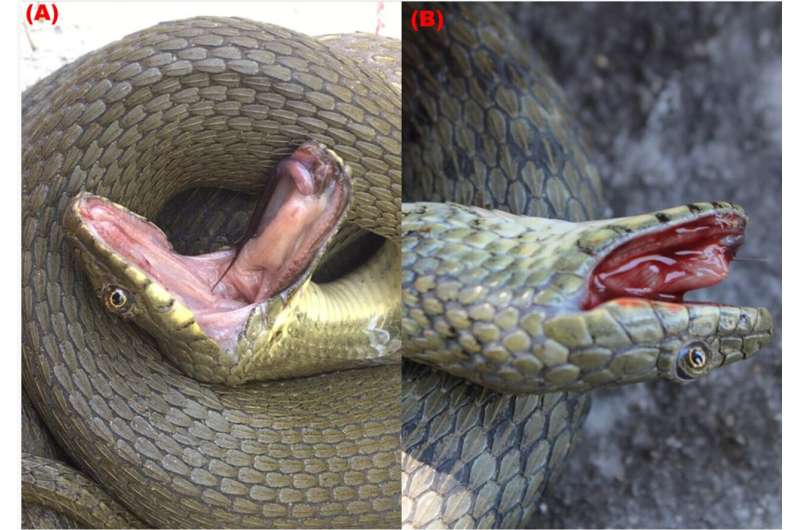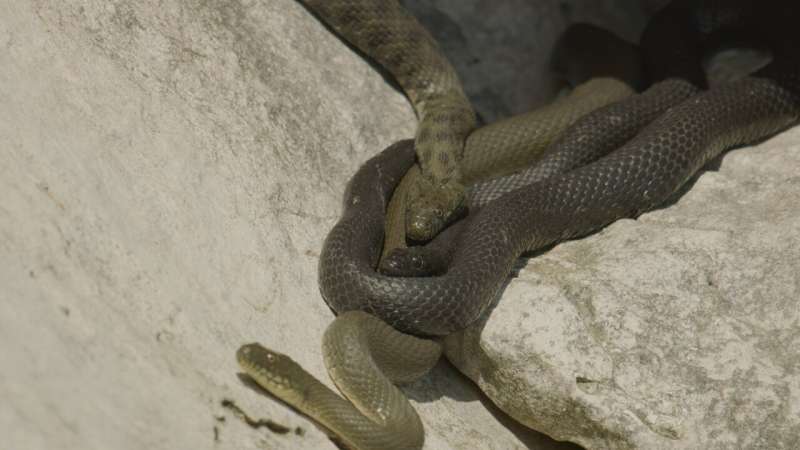May 13, 2024 report
This article has been reviewed according to Science X's editorial process and policies. Editors have highlighted the following attributes while ensuring the content's credibility:
fact-checked
peer-reviewed publication
trusted source
proofread
Dice snakes found to use a variety of techniques to more effectively fake their own deaths

A pair of biologists at the University of Belgrade, in Serbia, has found that dice snakes use a variety of techniques to fool predators into believing they have died. In their paper published in the journal Biology Letters, Vukašin Bjelica and Ana Golubović, describe how they captured hundreds of the snakes using their hands to learn more about their death feigning (DF) abilities and what they learned by doing so.
Prior research has found that many animals use DF as a way to allude predators—pretending to be dead can coax a predator into ceasing aggressive behavior, allowing the prey to escape. In the case of snakes, DF can sometimes cause an animal that has attacked it to stop attacking and simply walk away. Snakes are often killed but not eaten because they are seen as danger, rather than food.
For this new study, the researchers chose to focus their attention on dice snakes due to their reputation as effective DF creatures.
Dice snakes are non-venomous Eurasian snakes that are also known as water snakes. They typically grow to just over a meter long. Their coloring varies and they tend to live near water because they feed on fish, frogs, tadpoles, and toads. The snake is also known to secrete foul-smelling material from its cloaca as a means of warding off predators. To learn more about their DF abilities, the research team ventured into the field near the University of Belgrade and captured 263 of them.
To learn more about how the snakes respond when captured, the research pair used several techniques, all of which involved lunging at them. Sometimes the snakes were grabbed behind the head and other times they were grabbed elsewhere on the body. After each capture, the snake was held against the ground or in the air and carefully watched for 30 seconds to see how it behaved.

The researchers found that the snakes tended to coat themselves, when possible, in fecal discharge (a sign of death in many animals) and/or material from their cloacae. Several also emitted blood from their mouths. Most of them also ceased moving and would go limp.
The researchers also tested the resolve of the snakes by laying several specimens on their backs and waiting for them to respond—most often they would wait for the researcher to move away. Overall, they found that those snakes that employed all their DF tools, tended to play dead for the least amount of time, clearly expecting their techniques to fool any predator that had grabbed them.
More information: Vukašin Bjelica et al, Synergistic effects of musking and autohaemorrhaging on the duration of death feigning in dice snakes ( Natrix tessellata ), Biology Letters (2024). DOI: 10.1098/rsbl.2024.0058
Journal information: Biology Letters
© 2024 Science X Network




















